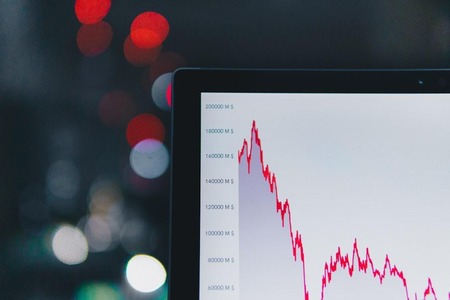
If you are familiar with trading you know liquidity is important. Liquidity is the life-giving force that keeps the market running. If liquidity is not enough, the market might not survive.
Who provides liquidity? The market makers provide liquidity. Market makers are firms that operate behind the scenes and provide liquidity to facilitate trading.
Market making is rapidly evolving, modern technology and new regulations are transforming how things are done. In five (5) or years (10) years, trading might operate differently from how we know it today. In this article, we’ll explore the ongoing changes and make some predictions about the evolution of liquidity provision and market making. Let’s go.
The Role of Liquidity Providers in the Financial Market
There are a few similarities when it comes to liquidity providers vs market makers. Just like market markets, liquidity providers play an essential role and contribute to the efficiency of the market. Liquidity providers constantly quote buy and sell prices for financial instruments. Liquidity providers bear the risk of holding inventory and facilitate trading by matching buyers and sellers. There is a spread between the bid and ask price and this spread is where market makers profit from.
Current Market Making Models and Strategies
Market makers use different strategies to provide liquidity and facilitate trading. Let’s have a look at two (2) popular models.
- Designated Market Making:
This is the most common market making model. In this model, an exchange designates a firm to make a market in certain securities. The firm buys and sells quotes for tight spreads and continuous liquidity.
- Algorithm Market Making:
The algorithm market making model is gradually taking its ground among market makers and we predict that it will get better and more popular in the future. The algorithm model utilizes computers to automatically update quotes based on market conditions. Algorithms are faster than humans and algorithm rapid reaction would provide fastened spreads and liquidity to an utmost degree. An example of this model is a high-frequency trading (HFT) firm that uses ultra-fast connections and trading strategies to gain an advantage in the market.
How Technology is Changing Liquidity Provision
The union between technology and liquidity provisions is beneficial for every stakeholder. Technology is rapidly changing liquidity provision in markets, this means faster trade execution, lesser transaction costs, and global access to more markets. Let’s review three (3) ways technology is changing liquidity provision.
- Automated Trading:
Automated trading executed by computers makes up the majority of trading volume in stocks, futures, and forex markets. Advanced algorithms are taking charge of different market functions. For example, AI programs can analyze vast amounts of data and easily recognize trading patterns more than humans which results in tighter speeds and lower fees.
- High-Frequency Trading (HFT):
We have mentioned high-frequency trading before in this article. This super-fast automated trading is widely circulating. HFT firms utilize algorithms to trade in milliseconds, while they profit from tiny price differences. HFT adds volume and liquidity to the market yet, it could increase volatility. Our advice for investors is that you should carefully understand how HFT impacts any market you engage with.
- Global Access
With technology, you can access markets around the globe from any location you are. From the US, you can trade not only US stocks but shares on exchanges from Europe to Asia. This implies that you have more trading opportunities and can hedge risk across markets. Be aware that trading foreign securities could result in financial risks such as currency fluctuations, so don’t step into the water without knowing what’s inside, know the market you are trading, and perform thorough research.
Predicting The Future Evolution of Market Makers
Market makers’ role and function as liquidity providers in financial markets face challenges from emerging technologies like automation and Artificial Intelligence (AI). In the future, market makers will likely leverage AI and machine learning to gain valuable insights into market movements and modify their trading strategies.
AI-powered insights can detect subtle patterns in large amounts of data that humans might miss. Machine learning applications to historical market data can help market makers discover hidden relationships and better predict the performance of assets. Electronic trading and automation will also transform how market makers operate, automated trading systems powered by sophisticated algorithms can execute trades in milliseconds. So we’ll see market makers adopt automated processes to keep up with the rapid speed of electronic markets helping them compete with high-frequency traders.
In all this, human expertise will remain indispensable, we see market makers combine their trading skills with automation and AI to enhance human judgments rather than replace them. The future of market making lies at the intersection of humans and machines. When market makers leverage their strength and machine’s strength they would gain a competitive advantage and keep facilitating liquidity in fast-evolving markets. To sum it up, both human expertise and technology will shape the next evolution of market makers.
Final Thoughts
The role of market markers is set to evolve because automation and technology will transform the financial markets. However, this does mean that human oversight and judgment will be written off. Human oversight and judgment will remain vital yet, machines will take more responsibility for facilitating trades and providing liquidity.
This shift will bring greater spread and efficiency and we expect regulations to keep track of the pace by adequate monitoring.
Our advice to market makers is to embrace this evolution because it is progressive and while you leverage your expertise as a market maker also position yourself on the right side of this evolution.
